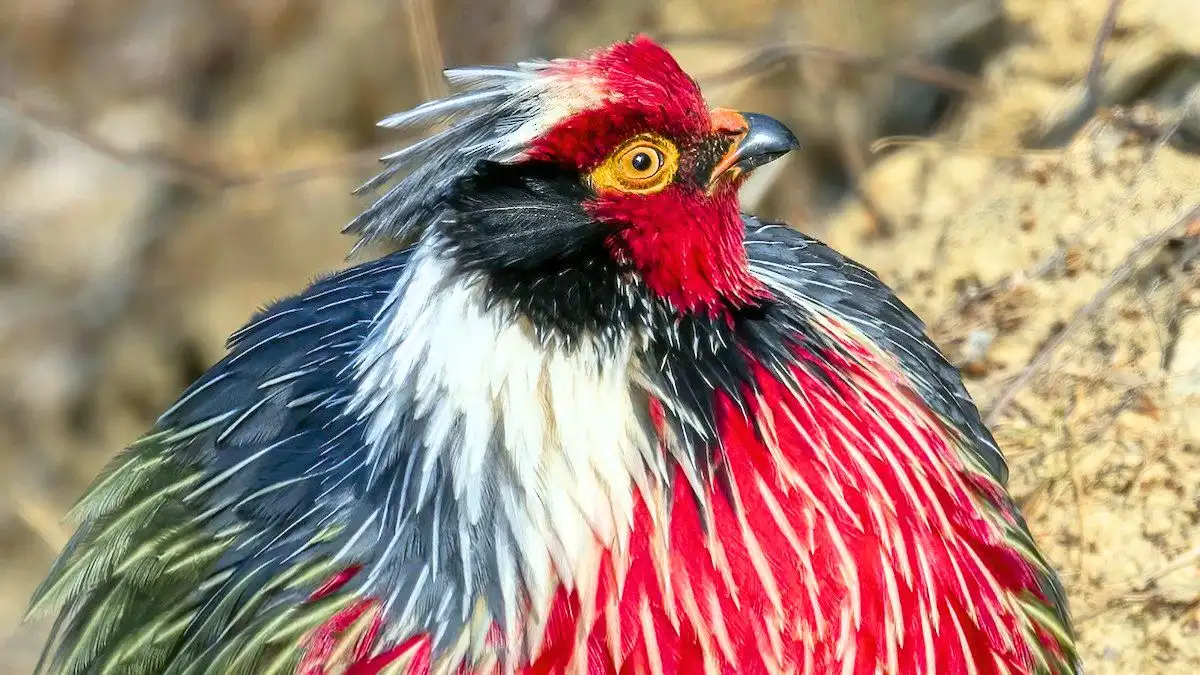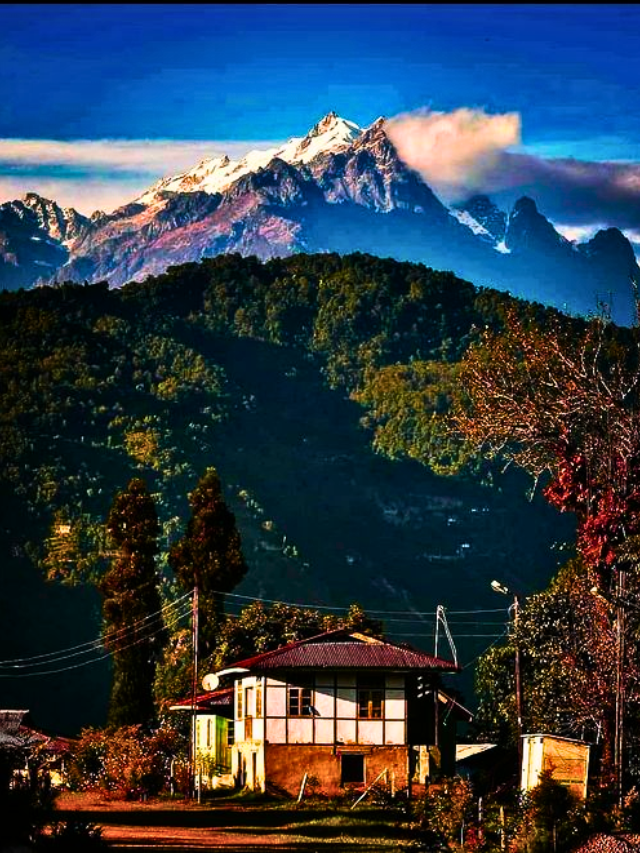Did you know that Sikkim is one of the smallest states in India, but it is home to over 30% of the world’s birds and animals? That is the reason Sikkim is special for wildlife.
Sikkim is not just known for its snow covered mountains, waterfalls, beautiful views, but also famous for some of the rarest and most beautiful animals and birds in India. From the shy red panda to the powerful snow leopard, the animals of Sikkim inhabit its forests, valleys and hidden mountain passes.
In this article, we will take you on a wildlife tour of Sikkim where to know how to find them, what makes them unique and how to enjoy the nature of Sikkim the right way.
Table of Contents
Top Animals Found in Sikkim
Sikkim is home to many rare and special animals. Some of them are hard to see anywhere else in India. Here are some of the top Sikkim animals you should know about:
Red Panda (State Animal of Sikkim): The Red Panda is small, cute, and looks a bit like a raccoon. It lives in the cold forests of Sikkim and spends most of its time on trees. Red Panda is also the state animal of Sikkim and this cute animal protected by the government.
Snow Leopard : This big wild cat is very rare and hard to spot. It lives in the high altitude of the mountains. The Snow Leopard is very strong, quiet, and blends into the snow, which makes it even more mysterious and dangerous .
Himalayan Black Bear: This bear has a white mark on its chest and mostly lives in the forests. It eats fruits, plants, and sometimes small animals. People often call it the “Moon Bear” because of the mark on its body.
Musk Deer: Also known as Kasturi Deer, this shy animal is known for its smell (strong, animalic, and little bit sweet). In old times, people hunted it for its musk, but now it is protected. It has small fangs like a vampire, which makes it look unique.
Himalayan Tahr: This wild goat has a thick coat to stay warm. It climbs steep rocky hills and is often seen in the high parts of Sikkim. It’s one of the amazing animals found in Sikkim.
Blood Pheasant : This colorful bird is the state bird of Sikkim. It gets its name from the red color on its feathers. You can find it in colder parts of the state.
Himalayan Griffon Vulture: This large bird of prey is seen flying high in the sky. It helps clean the environment by feeding on dead animals.
Wildlife Sanctuaries and National Parks in Sikkim
The wildlife of Sikkim is well protected in its many national parks and wildlife sanctuaries. These places are like safe homes for wild animals and birds. If you want to see the real beauty of nature and spot rare animals found in Sikkim, these are the best places to visit:
Khangchendzonga National Park
This is the largest and most popular national park in Sikkim. It is also a UNESCO World Heritage Site. The park has mountains, rivers, glaciers, and thick forests. You can see rare animals like the Snow Leopard, Red Panda, Himalayan Tahr, and many types of birds here.
Fambong Lho Wildlife Sanctuary
Located just 30 km from Gangtok, this Wildlife Sanctuary is easy to visit. It is covered with thick green forests and is home to many beautiful birds and butterflies. You may also spot Red Pandas, Himalayan Black Bears, and small wild animals.
Maenam Wildlife Sanctuary
This sanctuary is near Ravangla in South Sikkim. It is known for its amazing views of mountains and valleys. It’s a great spot for trekking and birdwatching. Animals like Musk Deer, Himalayan Tahr, and the Blood Pheasant live here. The area is calm, clean, and full of fresh mountain air.
Shingba Rhododendron Sanctuary
This sanctuary is located in the Yumthang Valley of North Sikkim. It is famous for its colorful rhododendron flowers that bloom in spring. There are many types of birds and small animals here too. The whole valley turns bright and beautiful during the flower season, making it a must visit spot.
Kitam Bird Sanctuary
If you love birds, this place is perfect for you. Located in South Sikkim, Kitam Bird Sanctuary has more than 200 types of birds. You can see Sunbirds, Hornbills, Woodpeckers, and many other colorful birds flying around. It’s one of the best birdwatching spots in Sikkim.
All these places help to protect the flora and fauna of Sikkim. Visiting them is not only fun, it is a natural education. These parks show how rich and beautiful the wildlife here really is.
Birdwatching Paradise: Birds of Sikkim
Sikkim is a great place for bird lovers. There are more than 550 bird species found here. The forests, hills, and valleys are full of colorful and rare birds.
The most famous bird is the Blood Pheasant, the state bird of Sikkim. It has red feathers and lives in cold places. Other beautiful birds include the Himalayan Monal, Satyr Tragopan, Sunbirds, Woodpeckers, and many more.
Popular bird watching spots include Kitam Bird Sanctuary, Fambong Lho, and forests near Ravangla.
The best time to see birds is from March to May and October to December. Don’t forget your camera!
The Flora and Fauna of Sikkim
Sikkim may be small, but it has one of the richest collections of plants and animals in India. The flora and fauna of Sikkim are very special because of its changing height from low valleys to high mountains.
The flora of Sikkim includes over 4,500 types of flowering plants. You’ll find orchids, bamboos, and over 30 types of rhododendrons. In spring, the hills are full of colorful flowers, especially in places like Yumthang Valley.
When it comes to fauna, Sikkim is home to rare animals like the Red Panda, Snow Leopard, Himalayan Tahr, Musk Deer, and many birds and butterflies. Many of these animals of Sikkim are protected inside national parks and sanctuaries.
Best Time to Visit for Wildlife Tourism in Sikkim
The best time to enjoy wildlife tourism in Sikkim is from March to May and October to December.
From March to May, the weather is cool and pleasant. Flowers bloom everywhere, and animals and birds are more active. This is also the best time to see rhododendrons in full color.
From October to December, the skies are clear, and you can enjoy beautiful views of the mountains and forests. Many animals of Sikkim come out during this time, and it’s great for photography and birdwatching too.
Avoid the monsoon months (June to September), as heavy rain can make roads difficult and limit access to parks.
Tips for Responsible Wildlife Tourism
Exploring the wildlife of Sikkim is exciting but it’s also important to travel responsibly. Here are a few easy tips to follow:
- Keep quiet in forest areas – Loud sounds can scare animals away.
- Do not litter – Carry your waste back and keep the forests clean.
- Stay on marked trails – Don’t go off-track, it can harm plants and disturb animals.
- Do not feed wild animals – It’s harmful for them and unsafe for you.
- Respect local rules and guides – Always follow instructions at national parks and sanctuaries.
- Use eco-friendly items – Avoid plastic and use reusable water bottles or bags.
- Do not pick plants or flowers – Let the flora of Sikkim grow naturally for others to enjoy.
Check Latest Stories:
Frequently Asked Questions
Do Sikkim have wild animals?
Yes, Sikkim has many wild animals like Red Panda, Snow Leopard, Himalayan Tahr, and Musk Deer.
Can a Red Panda animal attack humans in Sikkim?
No, Red Pandas are shy and peaceful animals. They do not attack humans.
What animals are in Sikkim?
Sikkim has animals like Red Panda, Snow Leopard, Himalayan Black Bear, Musk Deer, Himalayan Tahr, and many birds.
Which animal is famous in Sikkim?
The Red Panda is the most famous animal in Sikkim. It is also the state animal.
What is the famous bird of Sikkim?
The blood partridge is another name for the blood pheasant. this is the famous bird of Sikkim









